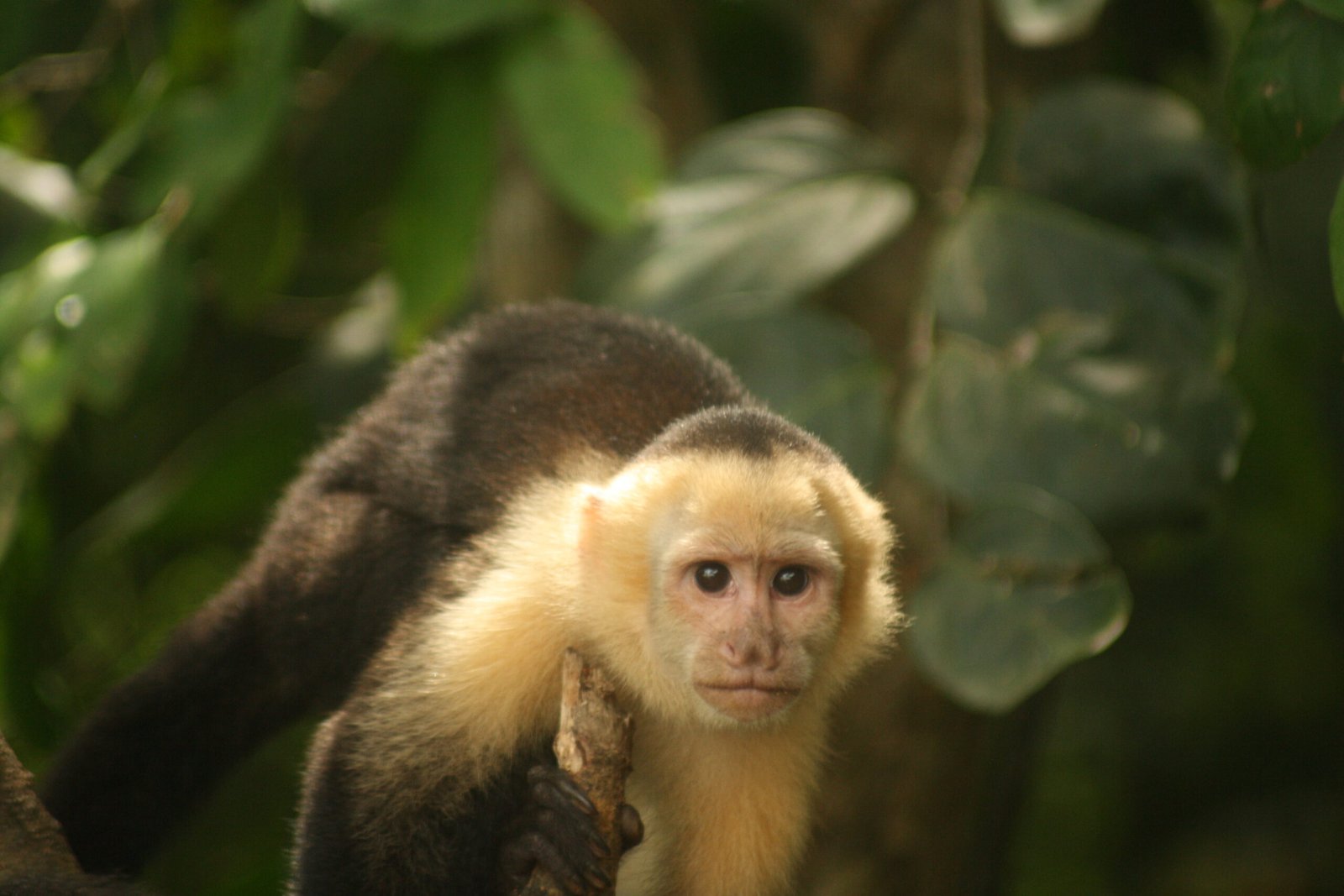
Costa Rica is home to four native monkey species, and you’re likely to encounter at least one during your visit—especially in national parks and rainforest areas. These intelligent, social animals play a key role in the ecosystem and are one of the country’s most beloved wildlife attractions.
🌳 1. Howler Monkey (Mono Congo)
- Where to see them: Everywhere—from beaches to rainforests
- Fun fact: Known for their deep, echoing calls that can be heard up to 3 miles away
- Behavior: They travel in troops and are often seen high in the trees, resting or feeding on leaves
🐵 2. White-Faced Capuchin (Mono Cara Blanca)
- Where to see them: Manuel Antonio, Osa Peninsula, and Guanacaste
- Fun fact: These monkeys are curious and highly intelligent—they’ve even been observed using tools
- Behavior: Very social and often approach tourist areas; active and agile
🐒 3. Spider Monkey (Mono Araña)
- Where to see them: Osa Peninsula, Corcovado, and remote rainforests
- Fun fact: They have prehensile tails and can swing through trees with incredible speed
- Behavior: Live in small groups, shy around humans, often heard more than seen
🐽 4. Squirrel Monkey (Mono Titi)
- Where to see them: Central Pacific coast, especially Manuel Antonio and Corcovado
- Fun fact: The smallest monkey in Costa Rica, with golden-orange fur
- Behavior: Extremely energetic and travel in large, noisy groups
🏞️ Where to See Monkeys in the Wild
Some of the best places to observe monkeys in Costa Rica include:
- Manuel Antonio National Park
- Corcovado National Park
- Tortuguero National Park
- Monteverde Cloud Forest
- Osa Peninsula
Always observe monkeys from a distance, avoid feeding them, and respect their space. Human food can harm them and disrupt natural behavior.
🌿 Final Tip
Bring binoculars or a good camera with zoom, and head out early in the morning for the best chances to spot them. A local nature guide can make a huge difference in finding and understanding these incredible animals.
Want more wildlife tips and travel inspiration? Visit cronlinerguide.com
